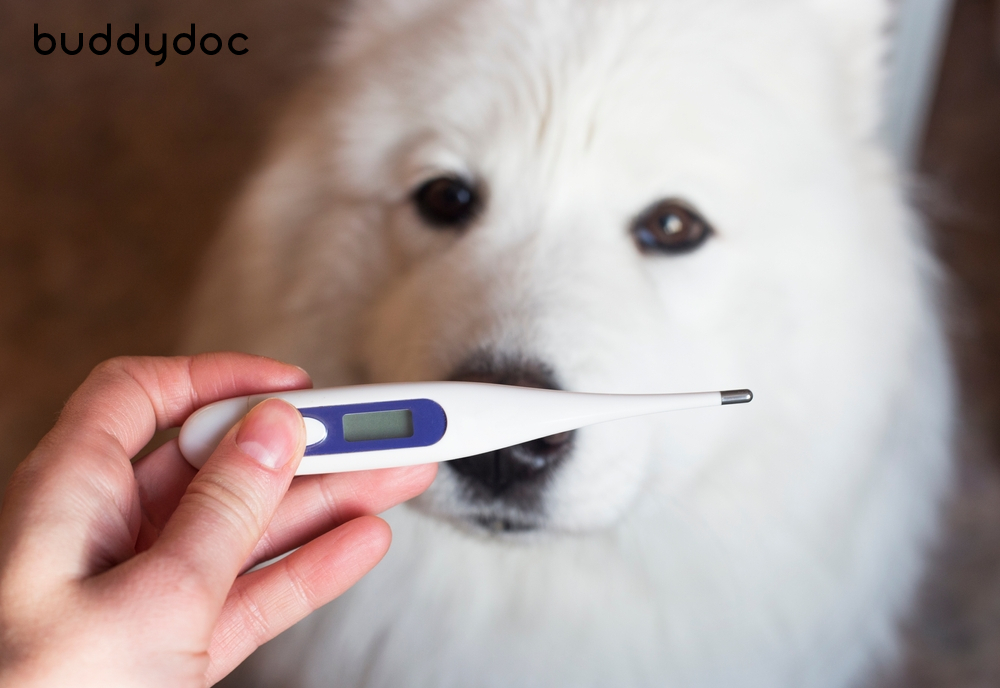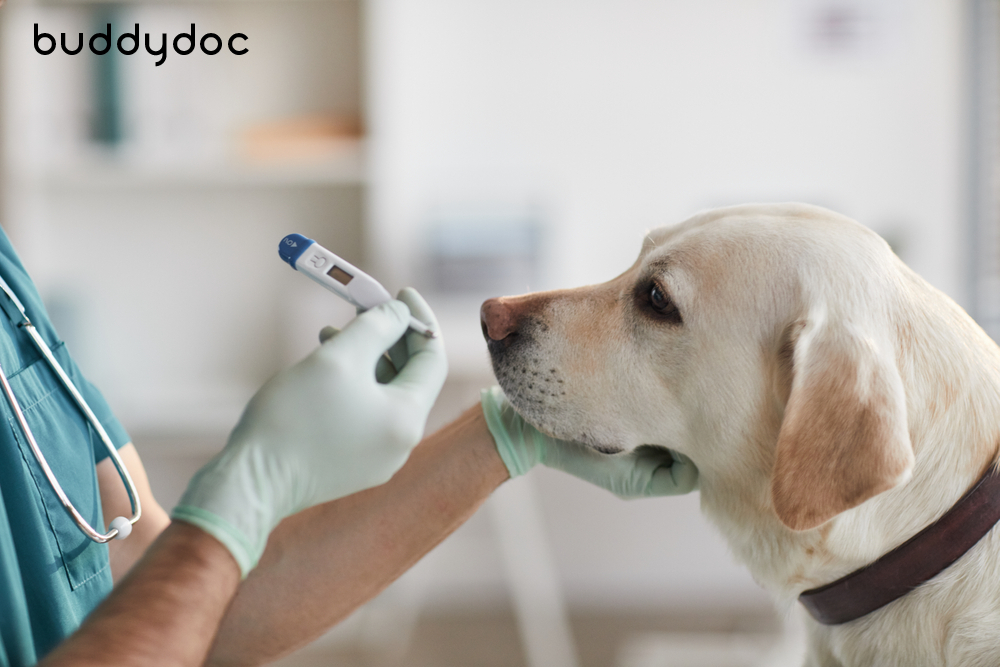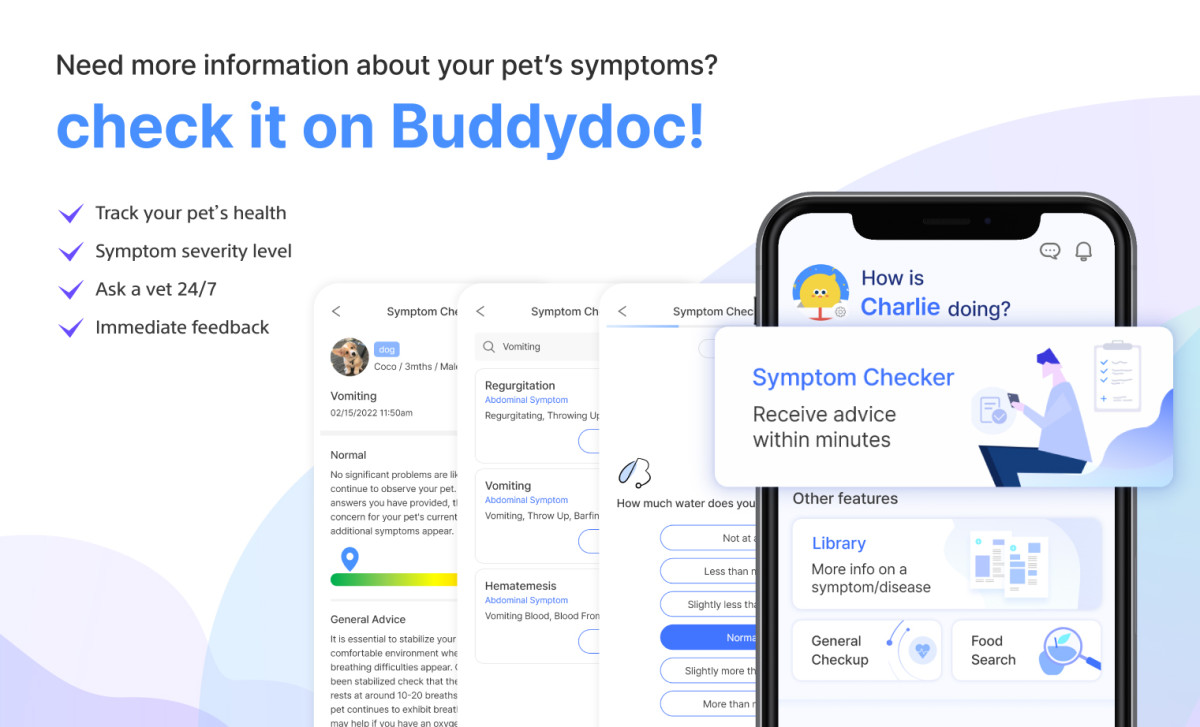SYMPTOMS
Hyperthermia in Dogs - Causes and Treatment Options for Fever in Dogs
페이지 정보
본문

What is hyperthermia in dogs?
A dog's normal temperature ranges from 102.5-103°F. Temperatures exceeding 103°F are considered hyperthermic. Their temperature can rise during excitement or immediately after exercise. Heat stroke is often used interchangeably with hyperthermia. Above 103°F is hyperthermic, while 106°F without illness signs signifies heat stroke. Critical levels around 107-109°F risk multiple organ failure and death. To measure temperature accurately, use a rectal or ear thermometer. To quickly gauge your dog’s fever, touching the nose can often give you early signs of fever as it will feel warm and dry.
Causes of hyperthermia in dogs

Infections and inflammation can cause fevers in dogs as their body’s try to fight the cause. There are many causes of high fever in dogs, but the most common ones include:
Infection:
Fever can arise as the body responds to infections from bites, scratches, and cuts. Other infections include ear infection, UTIs, and tooth infections, as well as infections or inflammation of internal organs, such as kidneys, lungs, or pancreas.
Ingesting foreign substance:
Consuming something your dog should not is also a common cause of fever. This can range from poisonous plants, anti-freeze, human medications, and any human foods that are toxic to dogs such as xylitol and grapes.
Vaccination:
It is normal to have a mild fever for a day or two after vaccination. If this fever persists longer than 2 days or if your dog’s condition seems to worsen, it is advisable to see a veterinarian.
Other:
There are immune-mediated diseases, cancer, bone marrow issues, etc. that may also cause fevers in dogs.
Symptoms of hyperthermia in dogs
Hyperthermia's impact on dogs is severe, which may cause some of the following symptoms initally. The first wave of symptoms consist of restlessness, panting, unsteadiness, drooling, and gum color changes. As signs are ignored, symptoms can progress into collapsing, spontaneous bleeding, dehydration, seizure, and extreme lethargy.
Common signs to look out for that can occur with a high fever:
⦁ Warm ears, warm, dry nose
⦁ Red, glassy-looking eyes
⦁ Lethargy, loss of appetite
⦁ shivering, panting
⦁ Runny nose, coughing
⦁ Vomiting, diarrhea
Risk of hyperthermia in dogs
If temperature is 103°F or higher; monitor your dog's well-being closely. Temperature that reaches 107°F can begin to cause organ damage, which requires immediate veterinary intervention. If you notice lethargy, tremors, persistent runny nose, vomiting, or diarrhea, it is a good idea to visit a veterinarian as soon as possible as well.
Home treatment options for hyperthermia in dogs

The best way to take your pet’s temperature is through a rectal or ear thermometer. For rectal use, apply lubricant and gently insert the thermometer approximately 1 inch into the anus.
Steps you can take to cool your pet while waiting for a vet is to apply a cool water-soaked towel on their paws or around their ears. Continue monitoring their temperature and stop cooling procedures if their internal temperature reaches 103°F. Always have a supply of fresh clean water to keep your pet hydrated and do not opt for any human fever medication.
Diagnosing hyperthermia in dogs

Veterinarians diagnose hyperthermia through behavior, physical signs, and their medical history. After confirming how severe the dog’s fever temperature is, vets conduct several tests to assess damage. These tests includes a complete blood count, serum blood chemistry, and urinalysis. Monitoring
Treatment options for hyperthermia in dogs
Depending on the cause and severity of the fever, a treatment plan wil lbe developed accordingly.
⦁ Infection
If the cause is due to an infection, antibiotics and antifungals may be prescribed.
⦁ Inflammation
If an inflammation of an internal organ is confirmed, medications, fluids, and pain relievers may be prescribed until the inflammation is relieved and symptoms disappear.
⦁ Immune-mediated disease
Immune-suppressing drugs may be prescribed.
⦁ Tumor
Chemotherapy or surgical resection may be performed.
Prevention tips for hyperthermia in dogs
Thoroughly cleaning and disinfecting any bites, scratches, and cuts can help prevent infections from occurring. Clear away and stay vigilant to your dog’s surroundings for any potentially toxic substances within their reach, such as toxic plants, foods, and human drugs.
Find out more about your dog’s symptoms and diseases on the Buddydoc app!
Install the Buddydoc app now and ask any questions you have about your dog on our 1:1 ask-a-vet board! The Buddydoc library is filled with everything you’d want to know about each symptom and disease your pet may experience.














